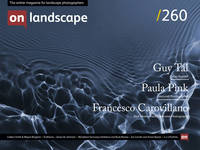James M. Johnston chooses one of his favourite images

James M. Johnston
I am a photographer based in western New York state (Buffalo, Niagara Falls). My primary focus is nature and landscape, with a documentary lean for wildlife and the beauty of the natural world that we need to protect. Much of my work is centered around western New York and Southern Ontario, Canada with portfolio projects in progress on the beauty of our National and State Park Systems.
Although we don’t typically equate fine art landscape photography with documentary imagery when you think about it, that is precisely what landscape imagery boils down to. Occasionally a series of images are created in order that they might capture a landscape before it is changed forever by mankind’s insatiable needs. Such is the case with the work of Eliot Porter. A collection of 80 images was first published in 1963 under the title “The Place No One Knew - Glen Canyon on the Colorado” as part of the Sierra Club’s Exhibit Format Series. This was not Eliot’s first foray into documenting the Southwest before it disappeared from view. However, this specific book and its images had a very strong influence on how I saw the land and photography in my youth.
Glen Canyon was formed by the Colorado River beginning in Southern Utah and crossing the border into Northeastern Arizona prior to the Grand Canyon. In the 1950’s it was determined that Hoover Dam in Nevada could not provide for the electrical and water needs of the area, and studies began to create a larger dam somewhere along the Colorado. Glen Canyon Dam began construction in 1956 and was controversial from the beginning. In fact, it has been credited for establishing much of the modern environmentalist movement. Creating a dam project also requires creating a lake where none was present before. At that time, The Bureau For Reclamation saw the value of the water and electricity along with recreation as being far more important than the beauty of the Canyon and the archaeological importance of the area to Native culture and history. The 710 foot high dam was built between 1956 and 1966, with Lake Powell filling to capacity in 1980. I grew up in Arizona in the 60’s and 70’s, making many trips to Northern Arizona with my Grandparents and remember seeing the dam’s waters change the landscape.

